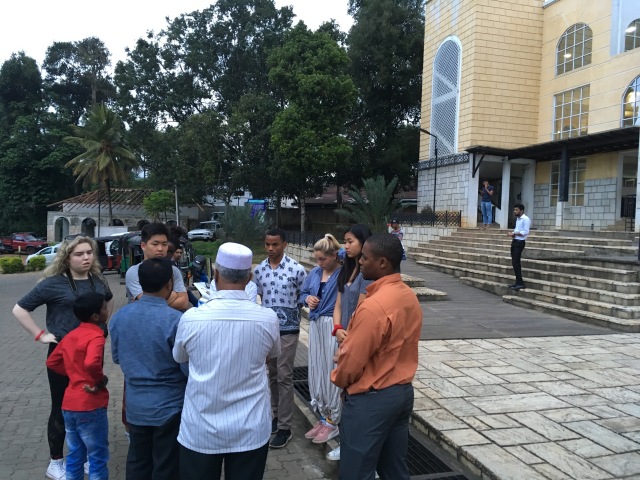June 24, 2018
On our last full day of the journey, students presented their final learning projects on topics of their choosing. These projects were a way of reflecting on particularly captivating aspects of culture, art, and religion we encountered in Sri Lanka and India.
The first presentation was from Katya Giffenig ’19, who explored the legal and cultural status of women in India. Katya focused on the subtle tensions between constitutional rights and cultural norms such as the practice of dowries.

Joseph Richards ’19 then followed with a presentation on Buddhism in Sri Lanka, in which he explored its foundations through Emperor Asoka, its important symbols, and role in everyday life. Joseph also discussed why practitioners pray to the Buddha and how influences of Hindu deity worship can be seen in the ways Buddhism is popularly practiced.


Then, Isabel Tracey ’20 provided an overview of Hinduism in Sri Lanka and India, focusing on its ancient origins, philosophies of atman (eternal soul) and reality of brahman (ultimate reality), and popular practices such as the puja (ritual offering) we have encountered during our time here. She also shared a beautiful drawing she made of Shiva, god of change and destruction.


Asher DuFord ’20 then followed with a comparative look at religious art in South Asian Buddhist, Hindu, and Islamic traditions. He highlighted areas of connection such as the makara (mythological crocodile) symbolizing the cycle of samsara common to Buddhism and Hinduism, as well as contrasts such as Islam’s rather abstract arabesque aesthetic in distinction to Hinduism’s elaborate portrayal of deities often with human-like qualities. Asher also showcased some of his impressive artwork produced throughout the trip.
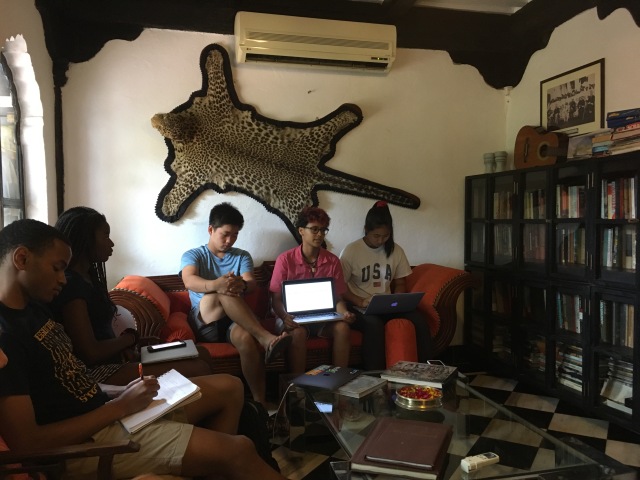


Claire Kim ’20 next presented on women and religion in Sri Lanka and India. She explored how religious practice could be both a vehicle for solidarity and hope as well as an agent of oppression, and reflected on aspects of our experience such as the all-male mosque we visited in Kandy as well as the somewhat taboo nature of women bathing in the sacred Narmada River.

Matthew Kim ’19 presented next on the Buddhist and Gandhi-inspired Sarvodaya movement in Sri Lanka, which he connected to the “One Village” movement in South Korea. Matthew discussed how religious philosophies have been leveraged to alleviate poverty and advocate for ahimsa (non-violence), particularly during the long Sri Lankan civil war.


Finally, Gabbie Coffe ’18 explored the functions of meditation and yoga in Buddhist and Hindu philosophy. She reflected on conversations with the Buddhist nun Ven. Subhagaya in Sri Lanka and a local guru and yoga instructor in India. Gabbie then concluded her presentation by recommending a particular meditation and yoga practice for each member of the group!








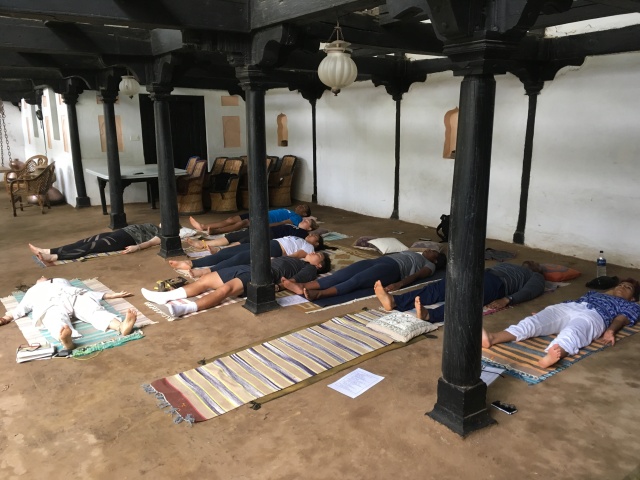

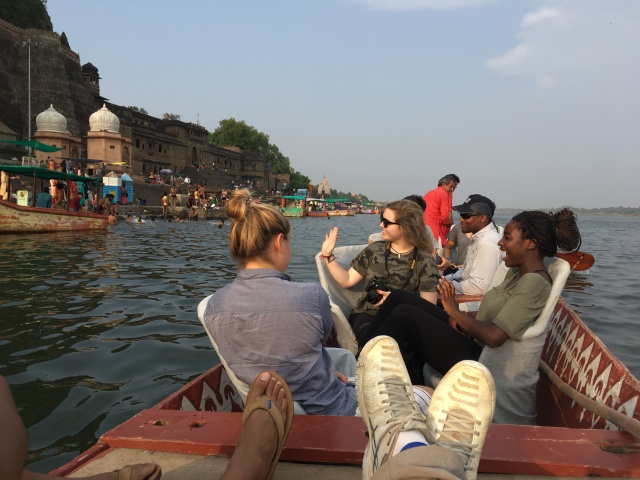

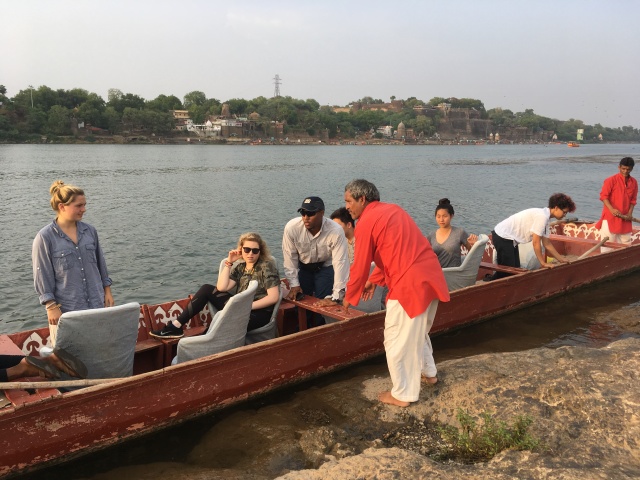





















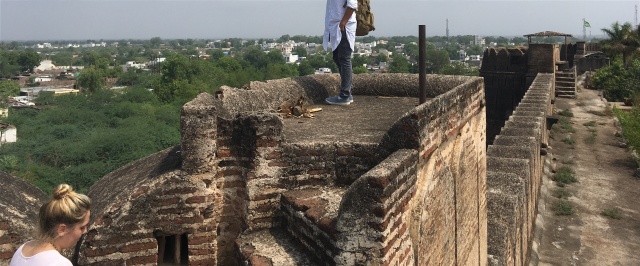






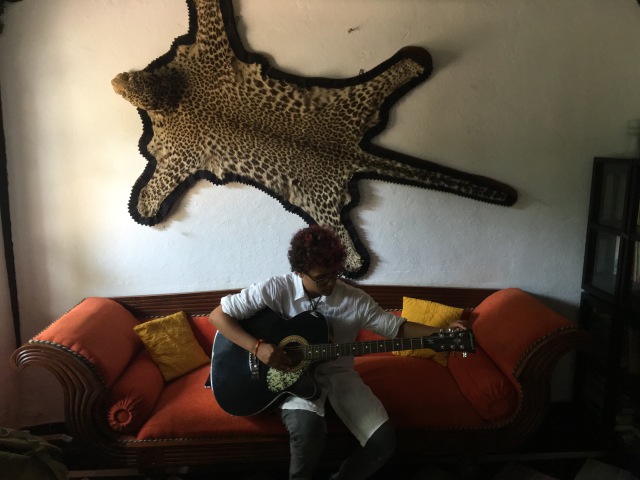



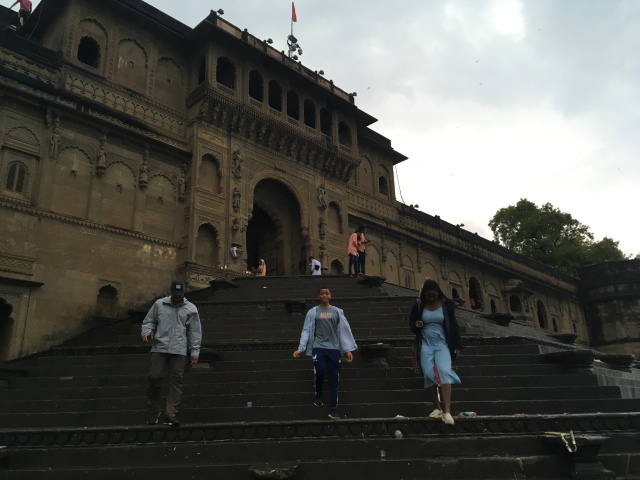








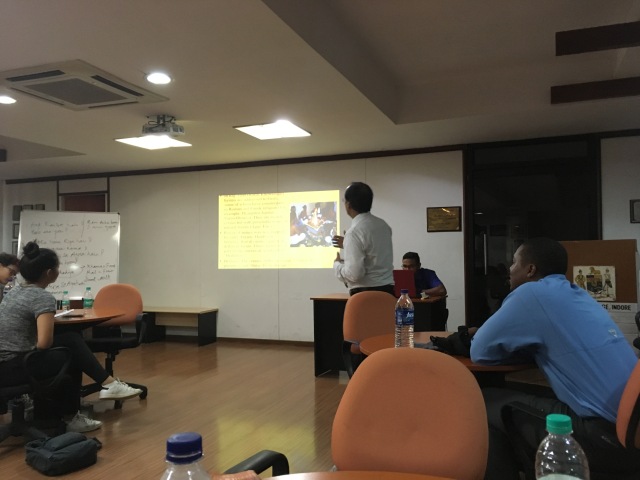





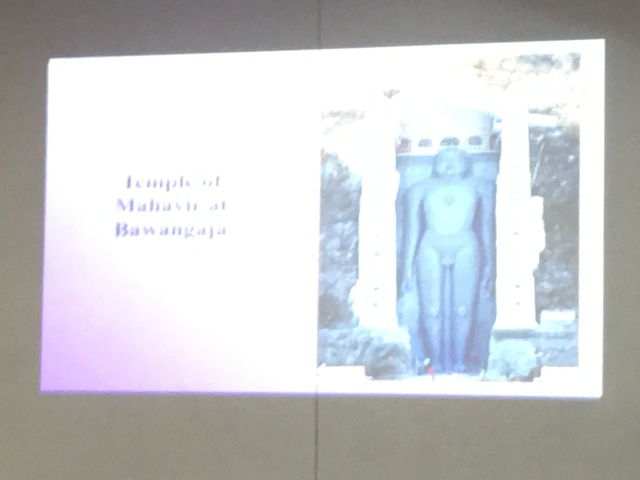







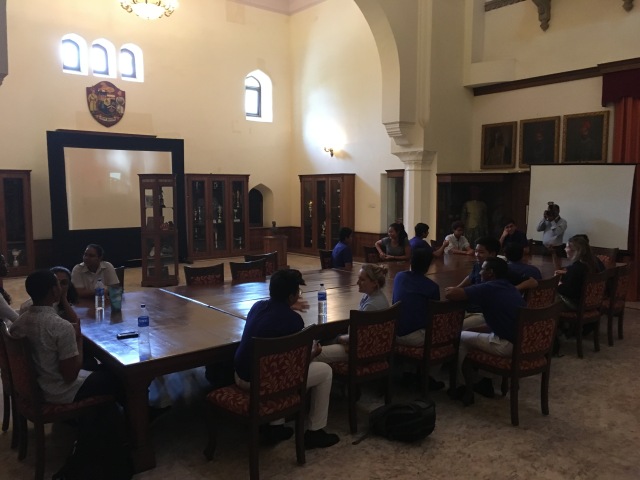















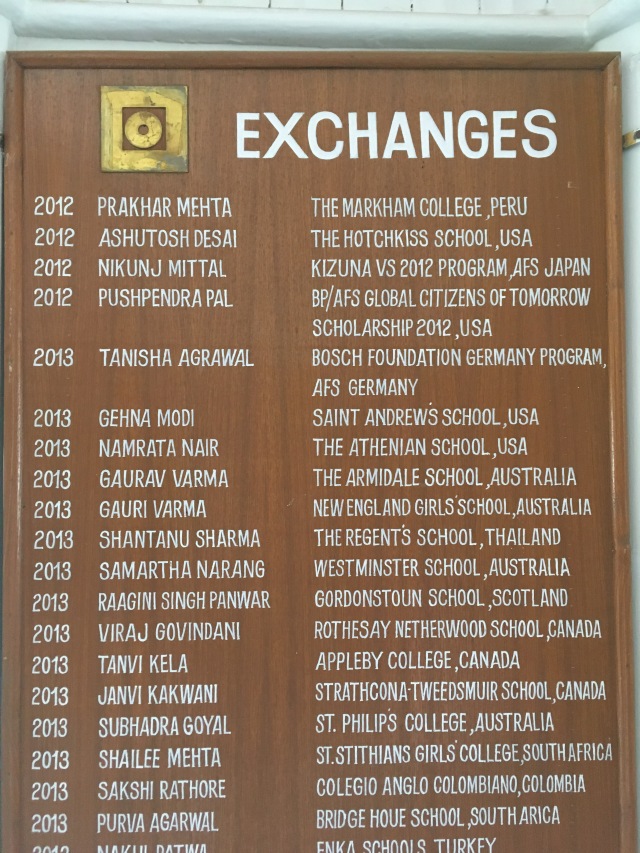








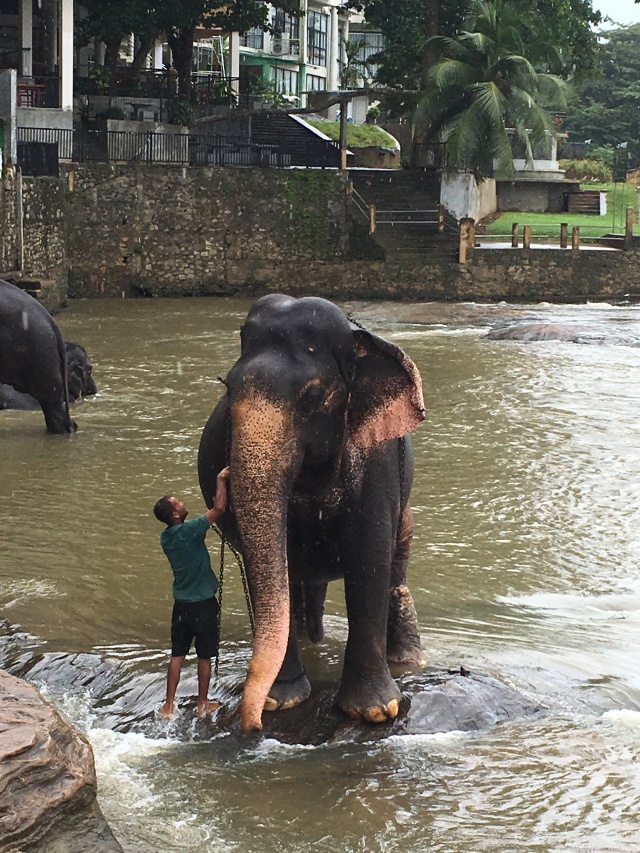
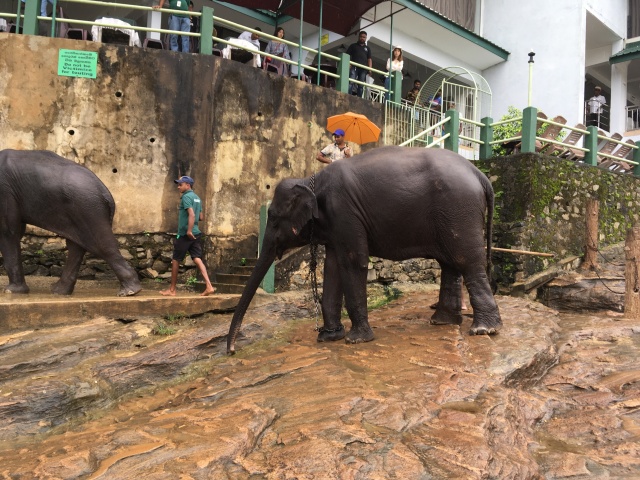


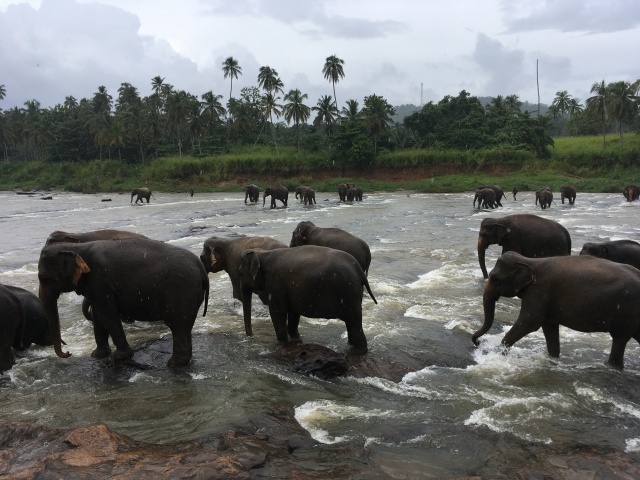








 On Sunday, we set off for the high altitude region of Nuwara Eliya, which means “the city of light.” Nuwara Eliya is known for its imposing mountainous landscape permeated by mist and rain, which provides ideal growing conditions for the tea plantations that produce the famous “Ceylon Tea.” On the way, we saw several waterfalls and paused to appreciate the natural beauty of the place.
On Sunday, we set off for the high altitude region of Nuwara Eliya, which means “the city of light.” Nuwara Eliya is known for its imposing mountainous landscape permeated by mist and rain, which provides ideal growing conditions for the tea plantations that produce the famous “Ceylon Tea.” On the way, we saw several waterfalls and paused to appreciate the natural beauty of the place.




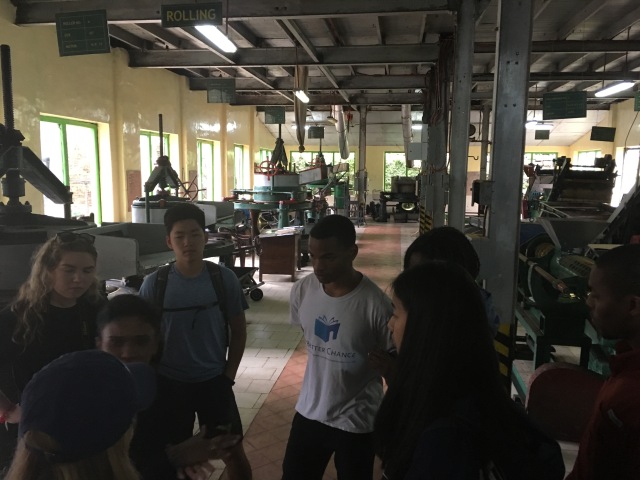







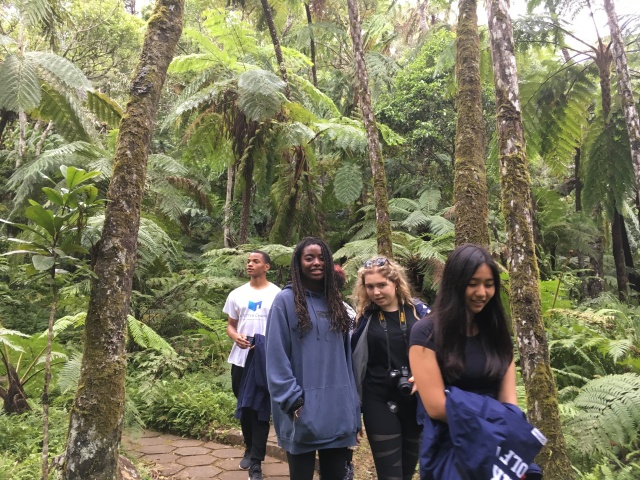



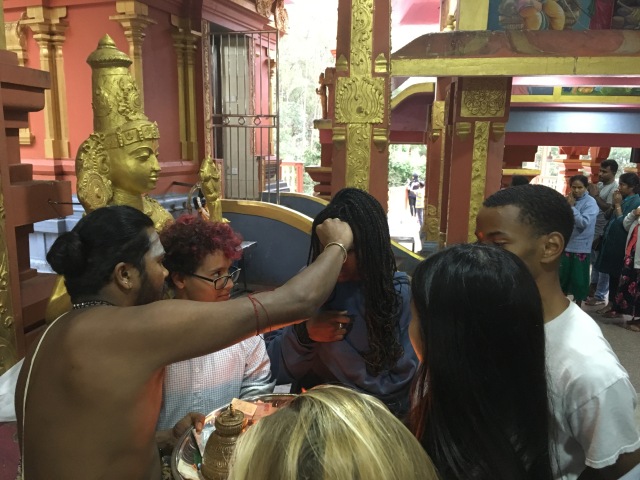




















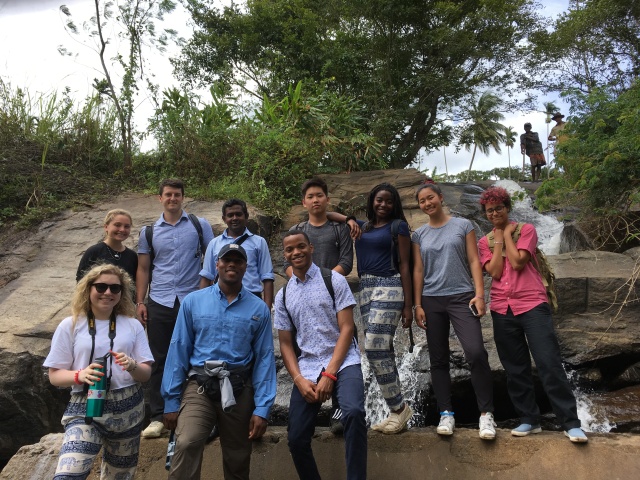














 On the way home, we visited a spice garden where we saw cinnamon, nutmeg, mace, ginger, turmeric, vanilla, cocoa, and aloe vera plants and were able to try samples. We also learned about traditional, plant-based Ayurvedic medicine.
On the way home, we visited a spice garden where we saw cinnamon, nutmeg, mace, ginger, turmeric, vanilla, cocoa, and aloe vera plants and were able to try samples. We also learned about traditional, plant-based Ayurvedic medicine.
 The students then returned to Kandy after a long day and spent the night with their host families, readying themselves to visit the rural Buddhist village of Ekiriya the next day.
The students then returned to Kandy after a long day and spent the night with their host families, readying themselves to visit the rural Buddhist village of Ekiriya the next day.













